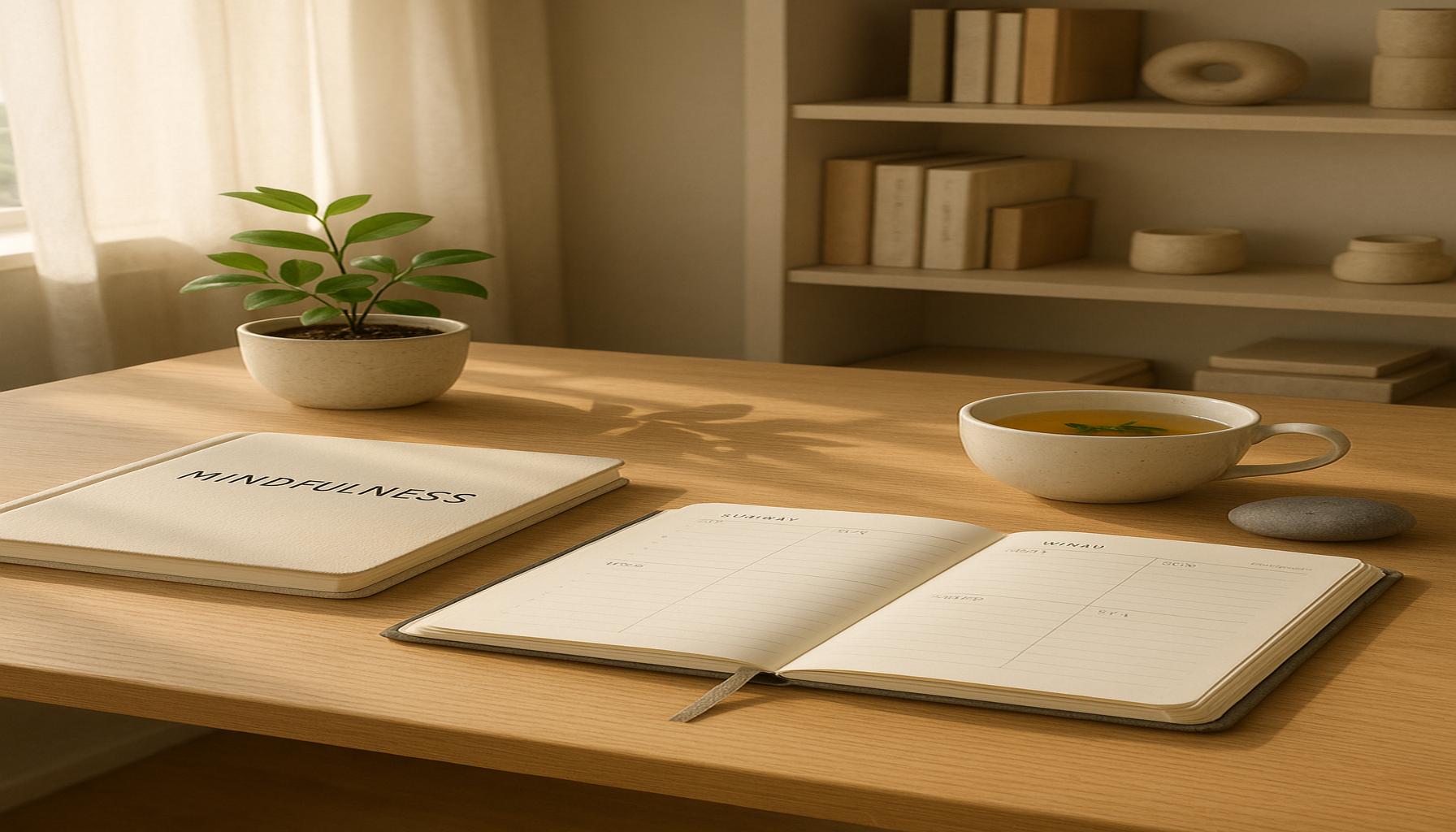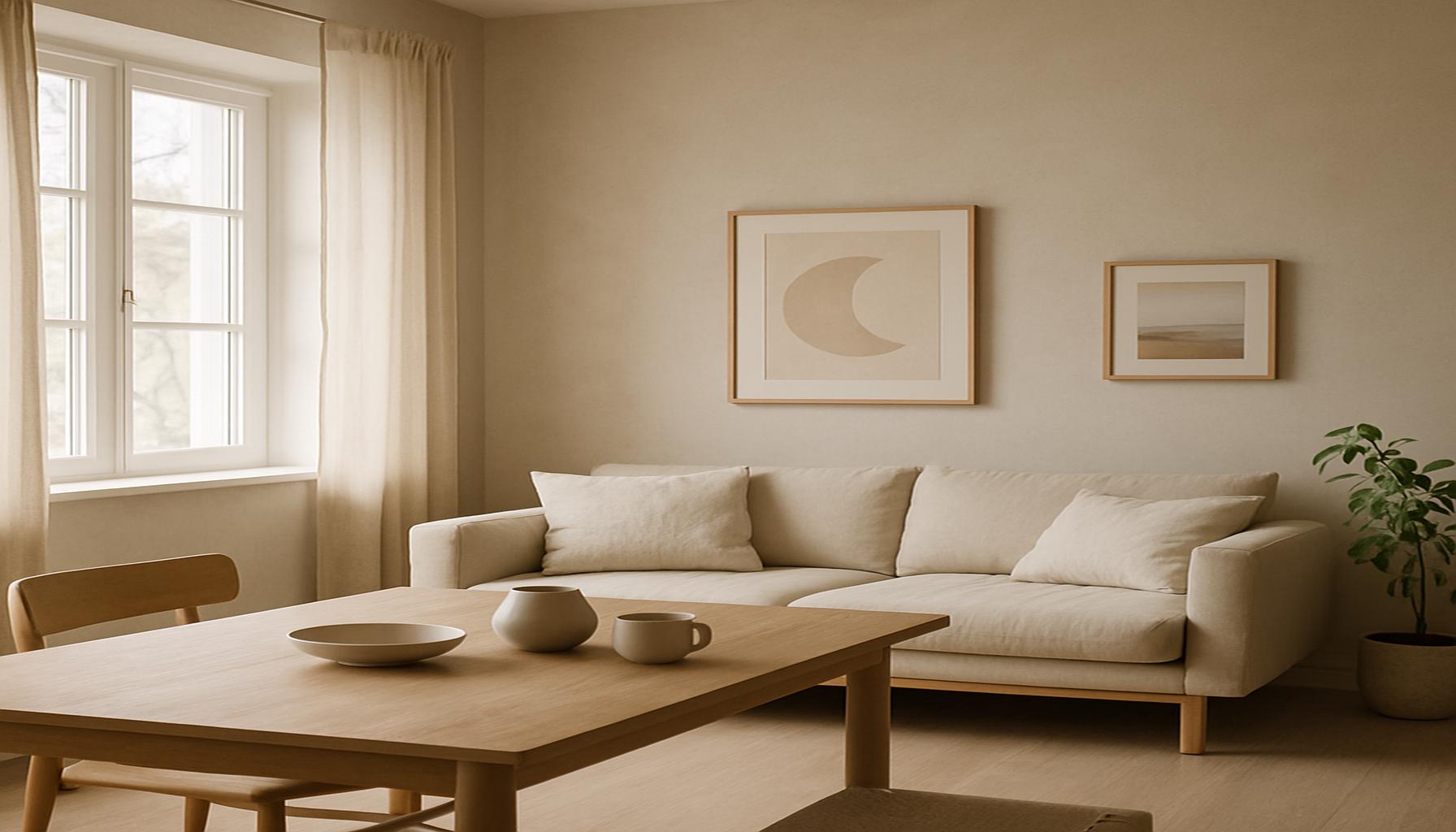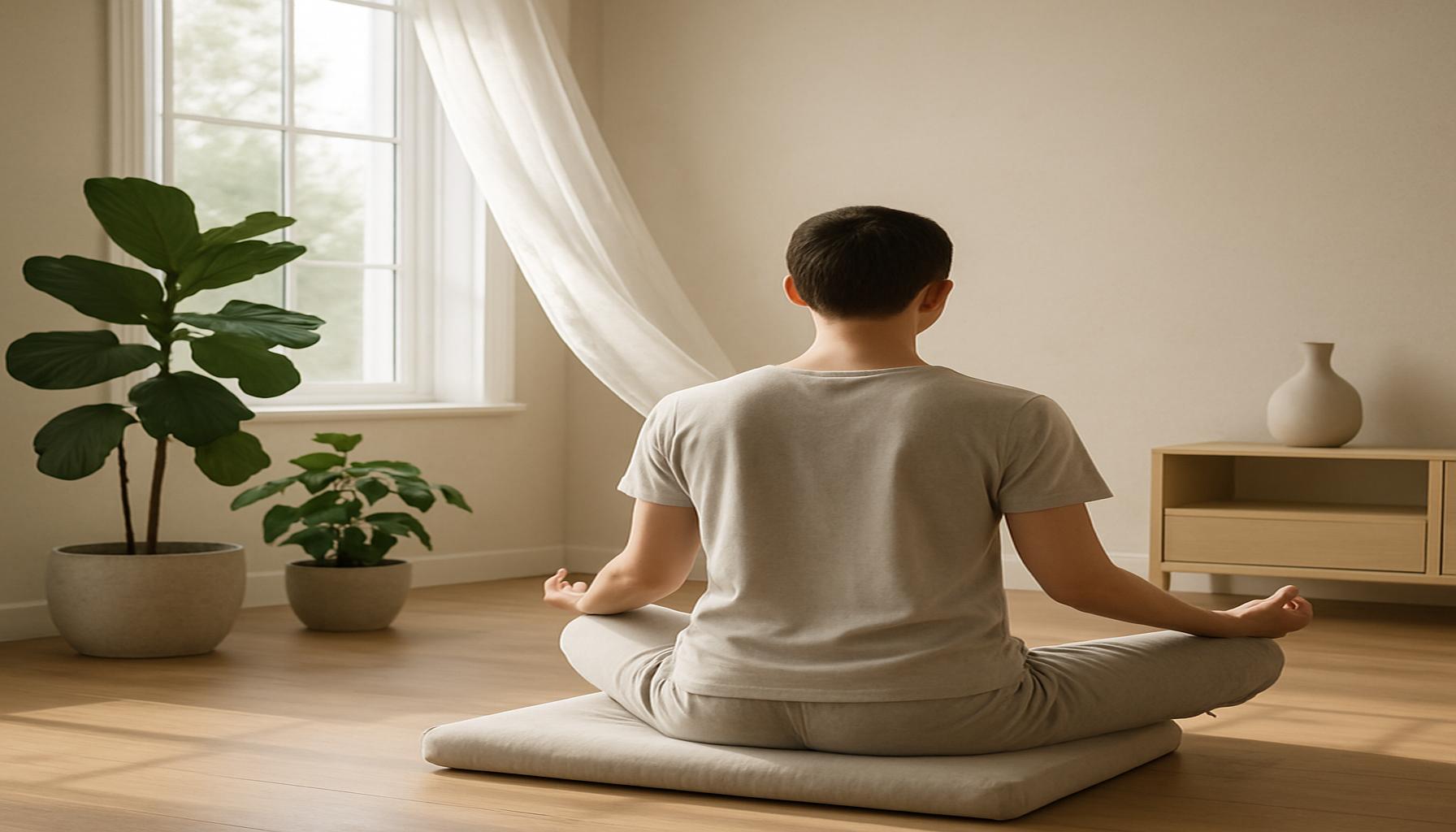The intersection of mindfulness and minimalism: how to live intentionally with less
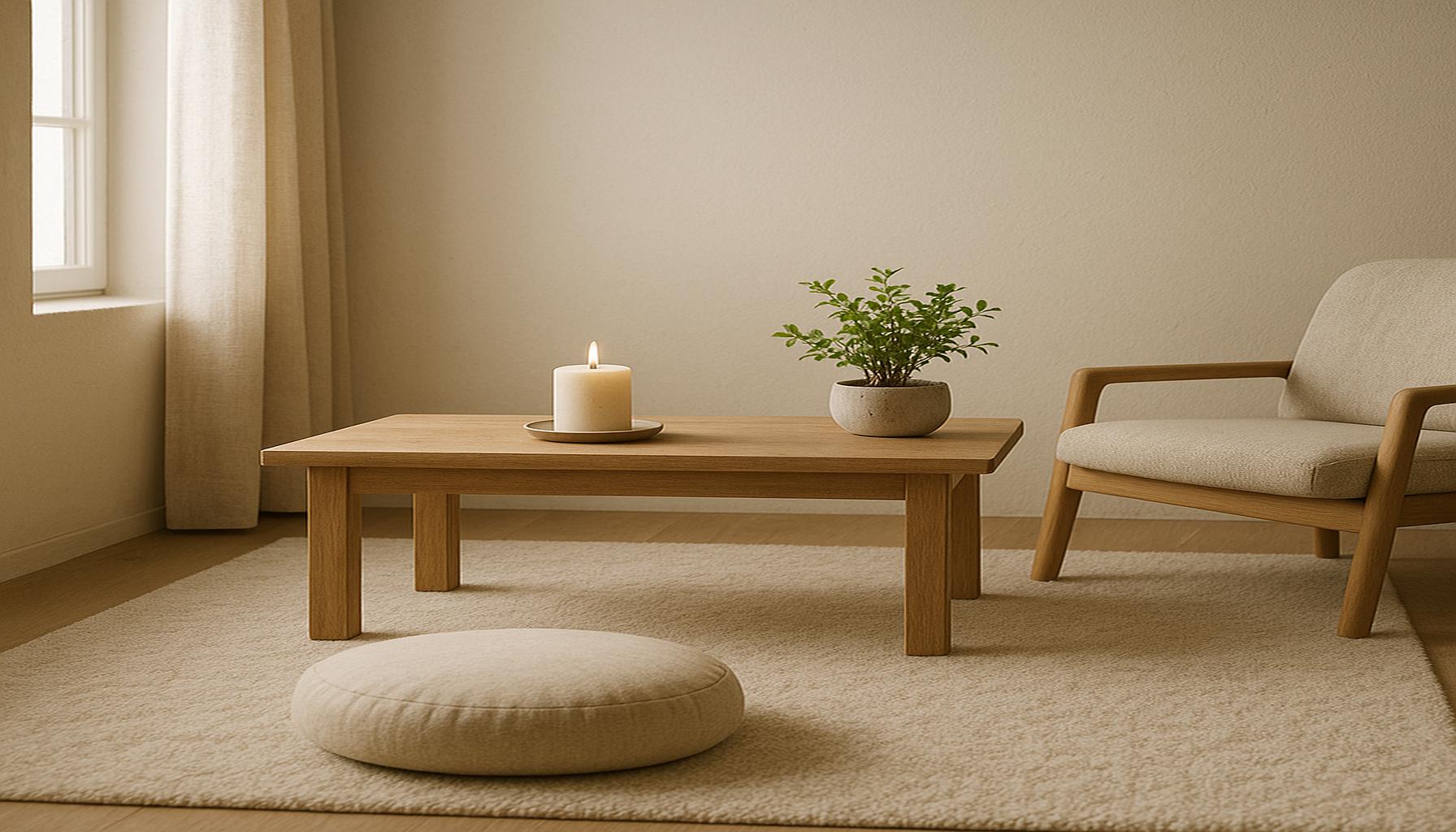
The Intersection of Two Transformative Practices
In a world increasingly dominated by consumerism and relentless schedules, many individuals are embarking on a quest for purpose and tranquility. The integration of mindfulness and minimalism presents a powerful avenue towards cultivating a more deliberate and fulfilling lifestyle. By intentionally choosing to simplify our lives, we foster a profound appreciation for the essence of what truly matters.
Understanding Mindfulness and Minimalism
At their core, both mindfulness and minimalism share a common goal: to enhance the quality of our lives through clarity and focus. Mindfulness teaches us to be fully present, to engage our senses, and to observe our thoughts and feelings without judgment. This practice can be as simple as taking deep breaths while savoring a cup of coffee or engaging in a mindful walk, feeling each step on the ground.
Meanwhile, minimalism encourages the shedding of superfluous possessions and distractions. By decluttering our environments—like our homes, workspaces, and even our digital lives—we create a sanctuary that nurtures our mental well-being. According to a 2021 survey by the American Psychological Association, nearly 60% of Americans reported feeling more stressed due to clutter in their homes, highlighting the palpable impact minimalism can have on mental clarity.
Benefits of Merging Mindfulness and Minimalism
The amalgamation of these two philosophies provides a treasure trove of benefits. Together, they can:
- Enhance mental clarity: A simplified environment allows for a clearer mind, making it easier to focus on tasks and goals.
- Reduce stress and anxiety: A minimalist lifestyle can alleviate the burden of excessive choices and possessions, which often contribute to anxiety.
- Foster deeper connections: With fewer distractions, individuals can cultivate richer relationships with family and friends, engaging fully in conversations and experiences.
- Encourage sustainable living: By consuming mindfully, individuals can make conscious choices that benefit themselves and the planet.
Real-Life Transformations
Consider the story of Jennifer, a busy professional from San Francisco, who began her journey towards minimalism and mindfulness. After reading about both practices, she decided to declutter her apartment, starting with her wardrobe. By donating clothes she hadn’t worn in over a year, she not only cleared space but also freed up mental energy previously spent on decision fatigue. Jennifer then incorporated mindfulness into her daily routine by setting aside time for meditation, and she quickly noticed improved focus at work and a newfound sense of peace.
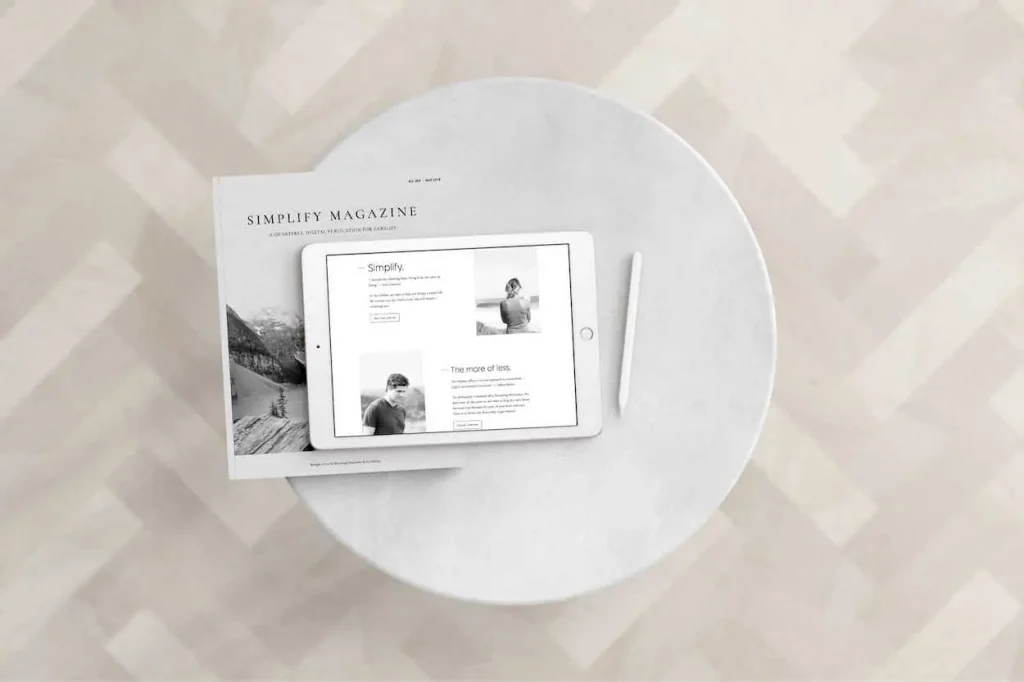
Across the United States, many people are tapping into these transformative practices. With a rapid rise in the “simple living” movement, resources such as blogs, books, and mindfulness workshops have become readily available, guiding individuals in their efforts to cultivate a more satisfying life.
A Journey of Discovery
As we continue to explore the dynamic interplay between mindfulness and minimalism, we invite you to consider how these practices can improve your own life. We will delve into practical techniques to implement, share inspiring personal narratives, and examine the profound effects of living with less. Join us on this enlightening journey to uncover how embracing simplicity can not only harmonize your life but also contribute to a broader cultural shift towards intentional living.
DISCOVER MORE: Click here to dive deeper
Finding Focus in a Cluttered World
The modern age, characterized by an overwhelming influx of information, possessions, and obligations, often leaves individuals feeling scattered and fatigued. As the quest for meaning and clarity intensifies, many are turning to the combined power of mindfulness and minimalism to navigate their lives with greater intentionality. Both practices serve as pathways to self-discovery and stress reduction, inviting individuals to reassess their priorities and engage more deeply with the present moment.
Mindfulness: Cultivating Awareness
Mindfulness, originating from ancient meditation practices, has gained traction in contemporary settings, including workplaces, therapy, and even educational institutions. According to the American Psychological Association, regular mindfulness practice can lead to improvements in emotional regulation and cognitive functioning. By fostering a state of awareness, individuals learn to observe their thoughts, feelings, and reactions without immediate judgment or reaction. This practice not only facilitates significantly lower stress levels but also enhances overall well-being.
Mindfulness can manifest in various forms, from formal meditation sessions to simple daily rituals such as mindful eating or conscious breathing exercises. Research indicates that engaging in these practices can lead to reduced rumination—an often debilitating cycle of negative thinking. By introducing mindfulness into our daily routines, we create space for clarity and intentionality, setting the stage for a more purposeful life.
Minimalism: The Power of Less
On the other side of this intersection lies minimalism, a lifestyle choice focused on simplifying one’s surroundings and commitments. Minimalism encourages individuals to examine their belongings critically, retaining only those that serve a genuine purpose or bring joy. A 2019 study by the National Association of Professional Organizers revealed that 82% of Americans felt overwhelmed by clutter, suggesting that our physical environments significantly influence our mental states. By adopting a minimalist mindset, we actively declutter not only our spaces but also our minds.
Moreover, minimalism extends beyond material possessions; it encompasses the relationships and commitments we engage with as well. By prioritizing quality over quantity, individuals can experience enriched relationships, reduced anxiety, and a stronger sense of identity. The intentional act of saying “no” to obligations that drain energy opens up room for pursuits that genuinely resonate with personal values and passions.
Practical Techniques for Integration
Bringing mindfulness and minimalism together can produce a synergistic effect that enhances both practices. Here are some techniques to get started:
- Mindful Decluttering: When decluttering your space, remain present in the moment. Reflect on your feelings towards each item and whether it aligns with your current self.
- Simplified Routines: Design daily routines that minimize decision fatigue, allowing for more intentional choices while incorporating mindful practices like meditation or deep breathing.
- Gratitude Journaling: Regularly jot down things you are grateful for, focusing on experiences rather than possessions, which encourages mindfulness and deepens appreciation for simplicity.
As we explore these transformative practices further, it’s essential to recognize the profound impact mindfulness and minimalism can have on shaping a life of integrity and purpose. Together, they provide a refreshing approach to navigating modern life, guiding us towards our most authentic selves while embracing the beauty of living intentionally with less.
The Intersection of Mindfulness and Minimalism
At the core of mindfulness lies the practice of being present, fully experiencing the moment without distraction. When combined with the principles of minimalism, which advocates for living with less, a powerful synergy emerges. This intersection offers a pathway to intentional living, where every choice is made with care and consideration. As you declutter your physical space, you simultaneously clear mental clutter, creating a serene environment that enhances focus and peace.
Mindful Consumption is one key aspect where mindfulness and minimalism align. Instead of mindlessly accumulating possessions, you begin to evaluate each purchase based on its necessity and potential to enhance your life. This conscious approach not only saves money but also reduces stress associated with financial overreach and maintenance of excess belongings.
Moreover, emotional well-being is significantly impacted through this intersection. Embracing minimalism encourages letting go of attachments to material goods, which may weigh heavily on the psyche. As you release these burdens, you foster a deep appreciation for life’s simpler pleasures, resulting in a more fulfilling and content existence. This shift towards valuing experiences over possessions can lead to increased happiness and a sense of purpose.
Additionally, mindful practices, such as meditation and breathing exercises, can cultivate resilience against the chaos of modern life. By incorporating these techniques into your daily routine, you enhance your ability to deal with challenges gracefully, further integrating the principles of both mindfulness and minimalism into your lifestyle.
| Category | Description |
|---|---|
| Mindful Consumption | Evaluating purchases based on necessity enhances focus. |
| Emotional Well-Being | Releasing material attachments leads to greater fulfillment. |
By understanding the profound impact that mindfulness and minimalism have on each other, individuals are empowered to lead more intentional lives. As you explore this path, you may discover new practices and insights that resonate personally, guiding you on a unique journey towards a simpler, more purposeful existence.
LEARN MORE: Click here to discover how to streamline your digital life
Building Intentional Living Habits
The synergy between mindfulness and minimalism does not only involve a shift in physical possessions but also permeates the way we conceive our daily lives. This intersection promotes a holistic approach to personal well-being, unlocking new avenues for mental clarity and emotional balance. By cultivating intentional living habits, individuals can fortify their commitment to mindfulness and minimalism, ultimately leading to a harmonious and fulfilling lifestyle.
Intentional Consumption
The principle of intentionality is notably evident in our consumer behaviors. In the United States, many households are inundated with purchases driven by fleeting desires and societal pressures—a reality that often contributes to the clutter in both our environments and our minds. Incorporating mindfulness into the decision-making process fosters a more deliberate consumption pattern. When considering a new purchase, ask yourself: does this item serve a purpose or bring joy? By aligning purchases with personal values and needs, the clutter of unnecessary items can be avoided, resulting in a more serene living space.
A compelling 2022 study from the Journal of Consumer Research reveals that individuals actively practicing mindfulness are less likely to engage in impulse buying, significantly reducing the likelihood of acquiring items that do not add value to their lives. By adopting this mindful approach to consumerism, individuals are empowered to reshape their environments into spaces of tranquility and purpose.
Mindfully Navigating Digital Clutter
While physical clutter poses challenges, digital clutter has emerged as an equally pressing concern in the modern age. Calls, notifications, countless emails, and social media engagements can create an overwhelming sense of chaos. Integrating mindfulness with minimalism in the digital realm involves curating the content we consume and limiting our online engagements. Establishing designated tech-free time blocks can foster a deeper connection with the present moment, allowing for interactions that are more meaningful.
Additionally, consider implementing digital decluttering practices, such as unsubscribing from unnecessary email lists or limiting your time on social media platforms. These intentional acts help individuals create a more focused and peaceful digital environment, ultimately reducing stress and distraction. Adopting a “less is more” attitude towards digital consumption fosters a better balance between online presence and interpersonal connections.
Cultivating Mindful Relationships
The tenets of mindfulness and minimalism extend into the social sphere as well. Intentional living prompts individuals to examine their relationships and commitments critically. By surrounding oneself with positive influences and distancing from toxic relationships, we can enhance our mental clarity and emotional health. A 2021 report from the American Psychological Association indicates that supportive relationships directly correlate with higher levels of well-being and lower levels of stress.
Finding the right balance in relationships means learning to say “no” when necessary, prioritizing quality connections that nurture and uplift. Intentional communication practices like active listening or engaging in deeper conversations can transform interactions into meaningful experiences, enriching our lives while simplifying our social obligations.
Within the essence of mindfulness and minimalism lies the profound realization that living intentionally with less fosters not just a simplified existence, but also one rooted in deeper connections, both with ourselves and with the world around us. As we explore these interconnected practices, it becomes evident that each step towards minimalism and mindfulness is a step toward creating a life that resonates with our true values and aspirations.
DISCOVER MORE: Click here to enhance your productivity
Finding Balance Through Mindfulness and Minimalism
In conclusion, the intersection of mindfulness and minimalism offers a transformative framework for living intentionally with less. By embracing these principles, individuals can cultivate a lifestyle that prioritizes mental clarity, emotional balance, and overall well-being. The journey begins with intentional consumption, where each purchase is evaluated not just for necessity but for its ability to enhance life. As evidenced by recent studies, this shift in thinking fosters a more serene environment, devoid of the clutter that often clouds our minds.
Moreover, navigating digital clutter mindfully creates space for meaningful interactions and minimizes distractions that detract from our personal connections. By establishing healthy boundaries, we can reclaim valuable time and presence in our daily lives. Equally important is the cultivation of mindful relationships, where quality supersedes quantity. Engaging deeply with those who uplift us enriches our experiences, contributing to a more intentional existence.
As we reflect on these interconnected practices, it is essential to recognize that living intentionally with less involves an ongoing commitment to reevaluate what truly matters. This journey towards minimalism and mindfulness not only simplifies our surroundings but also deepens our connection to ourselves and others. The remarkable insights derived from these practices encourage us to explore further, inviting a profound shift in how we navigate our lives in a world that often promotes excess. By prioritizing intention and embracing simplicity, we can create a life that resonates authentically with our true selves and aspirations.
